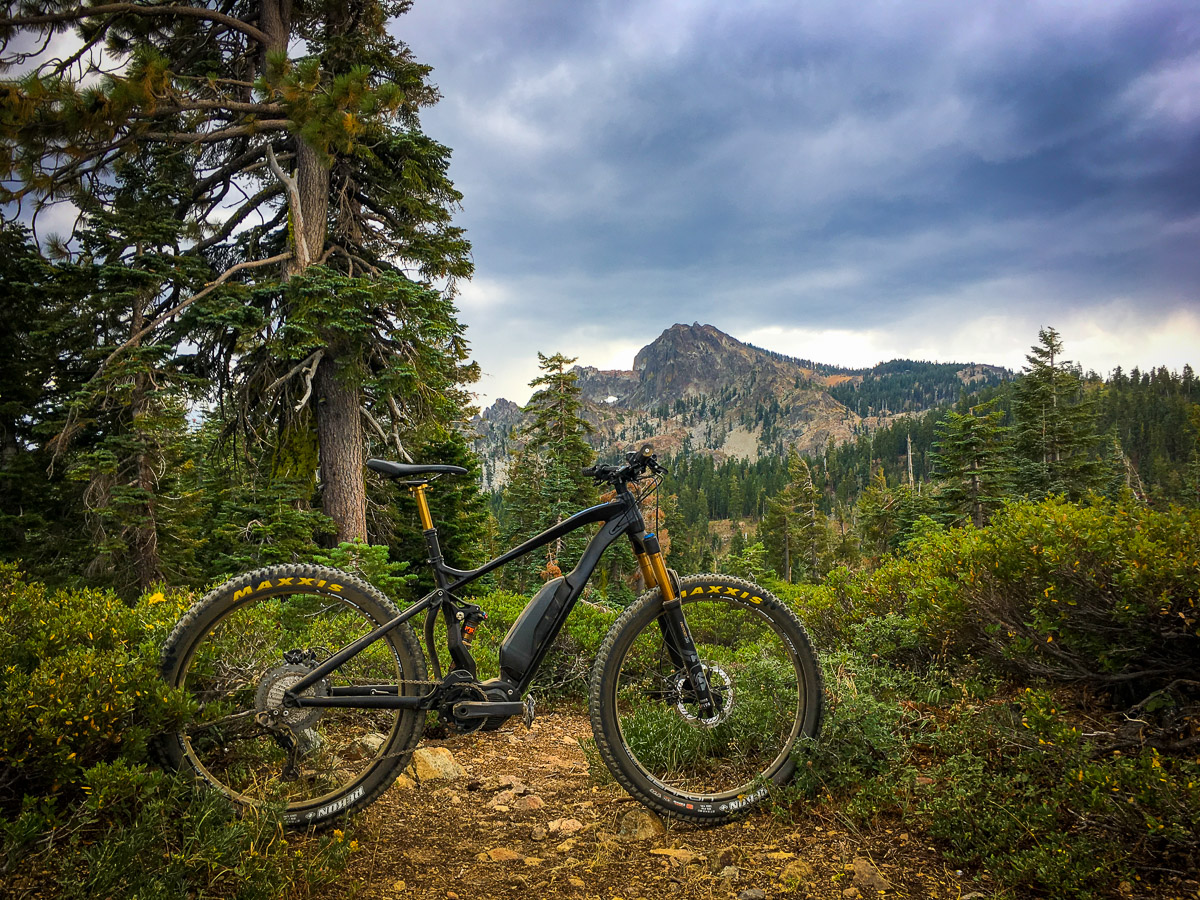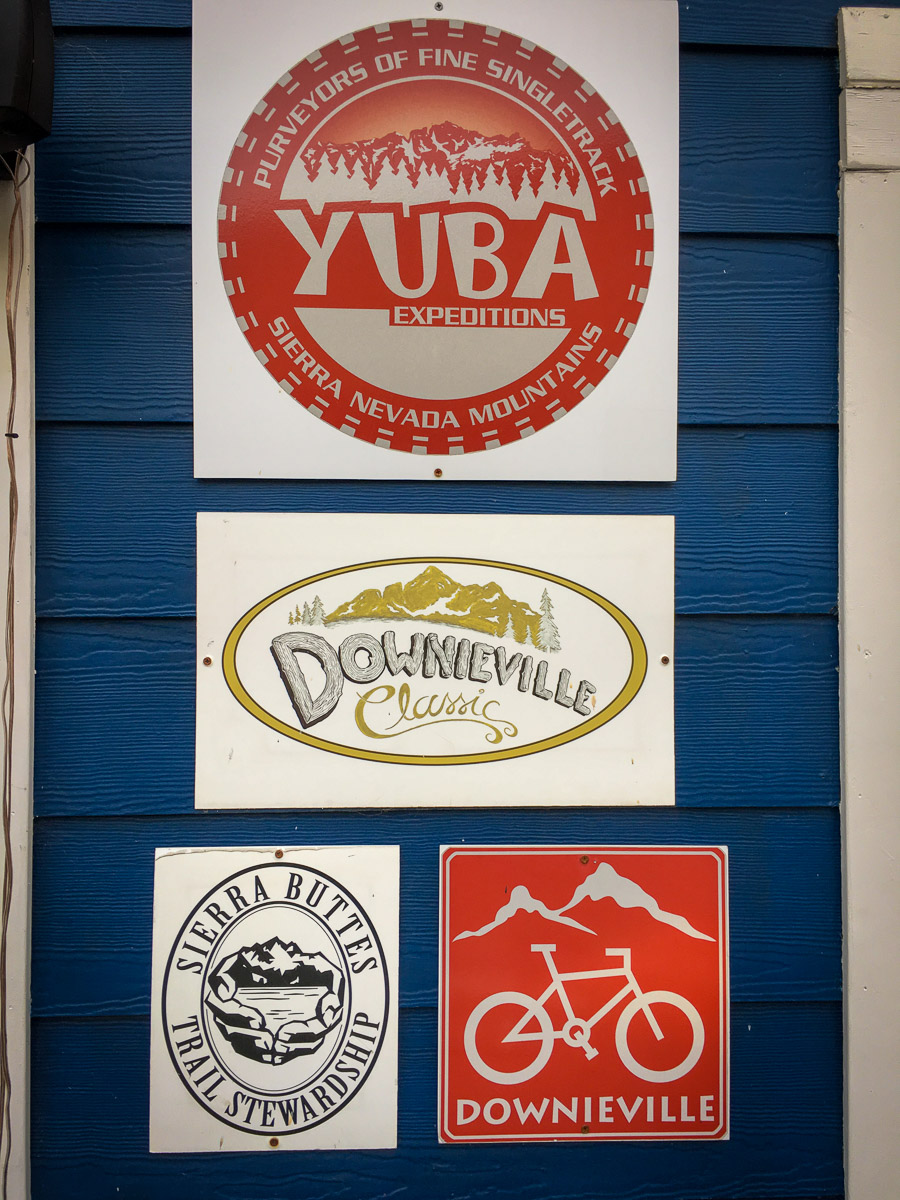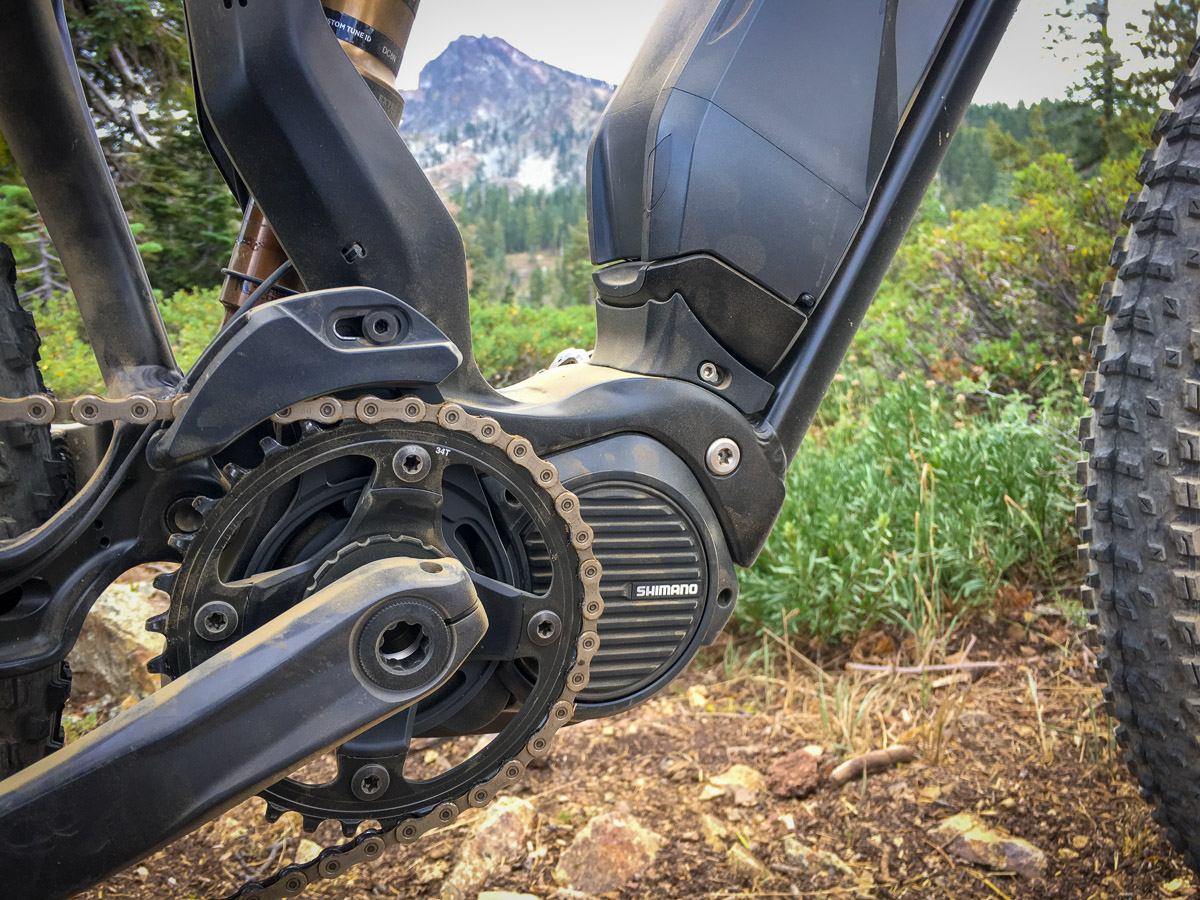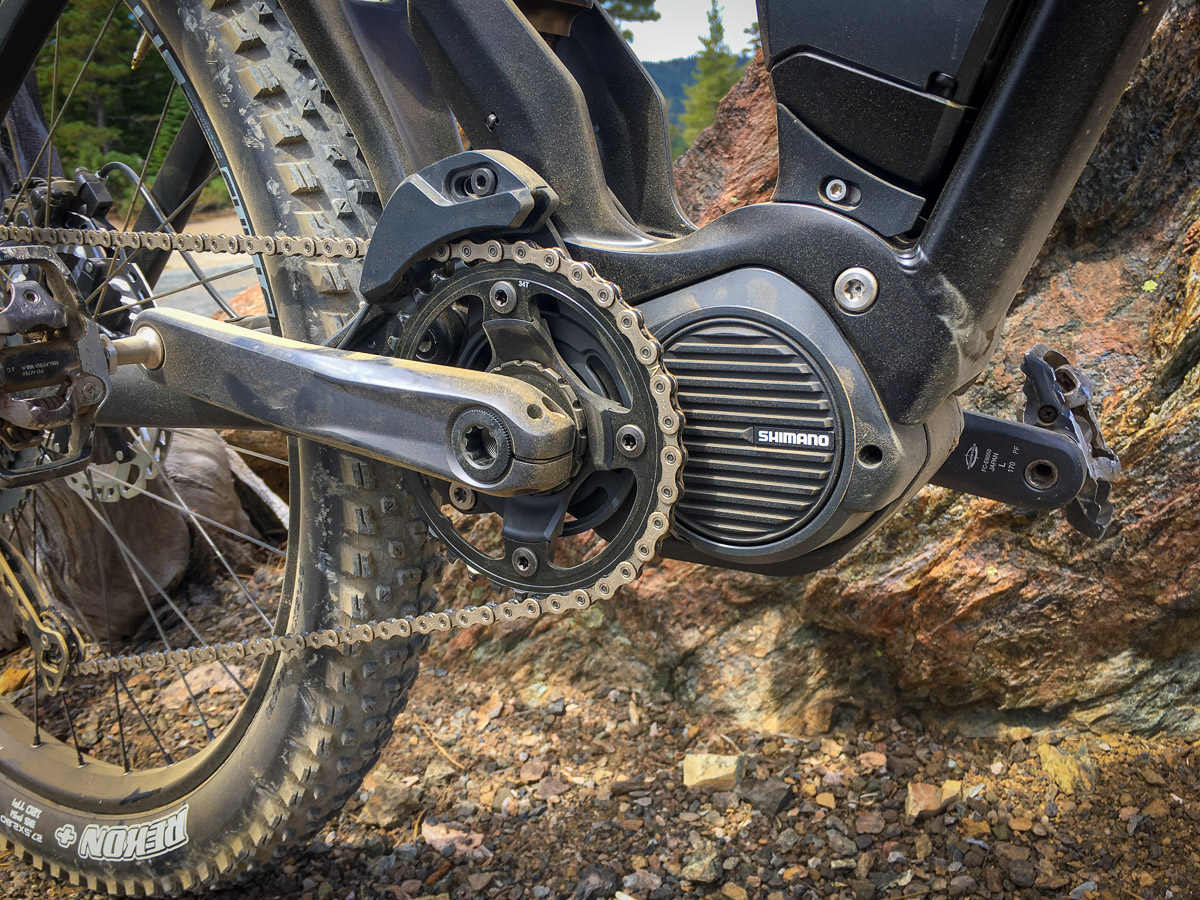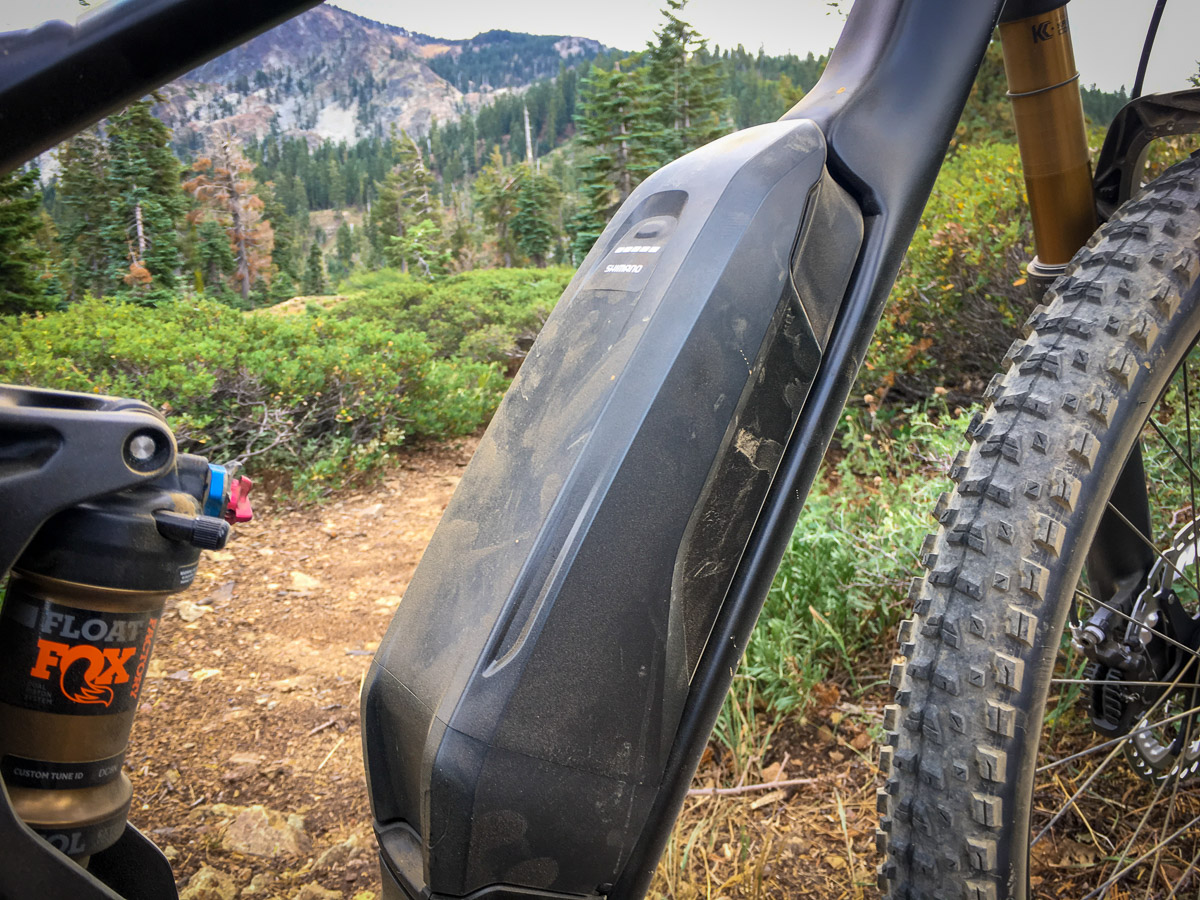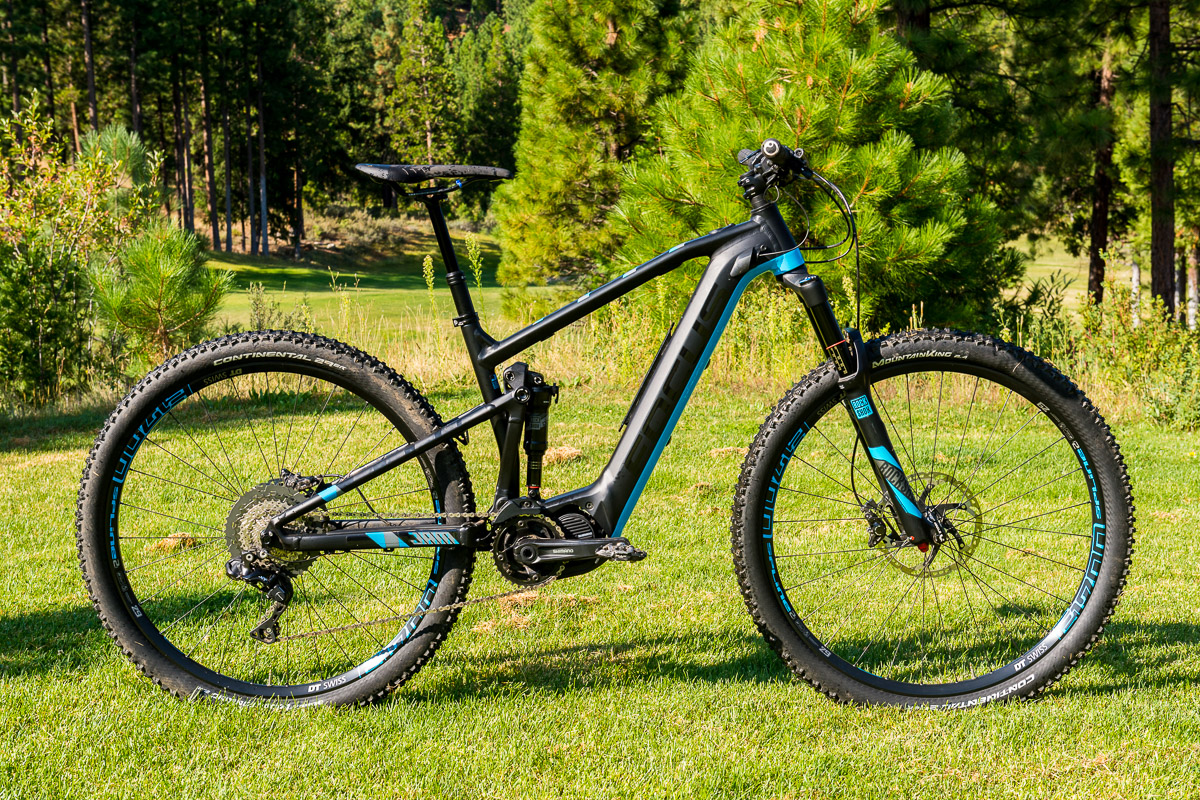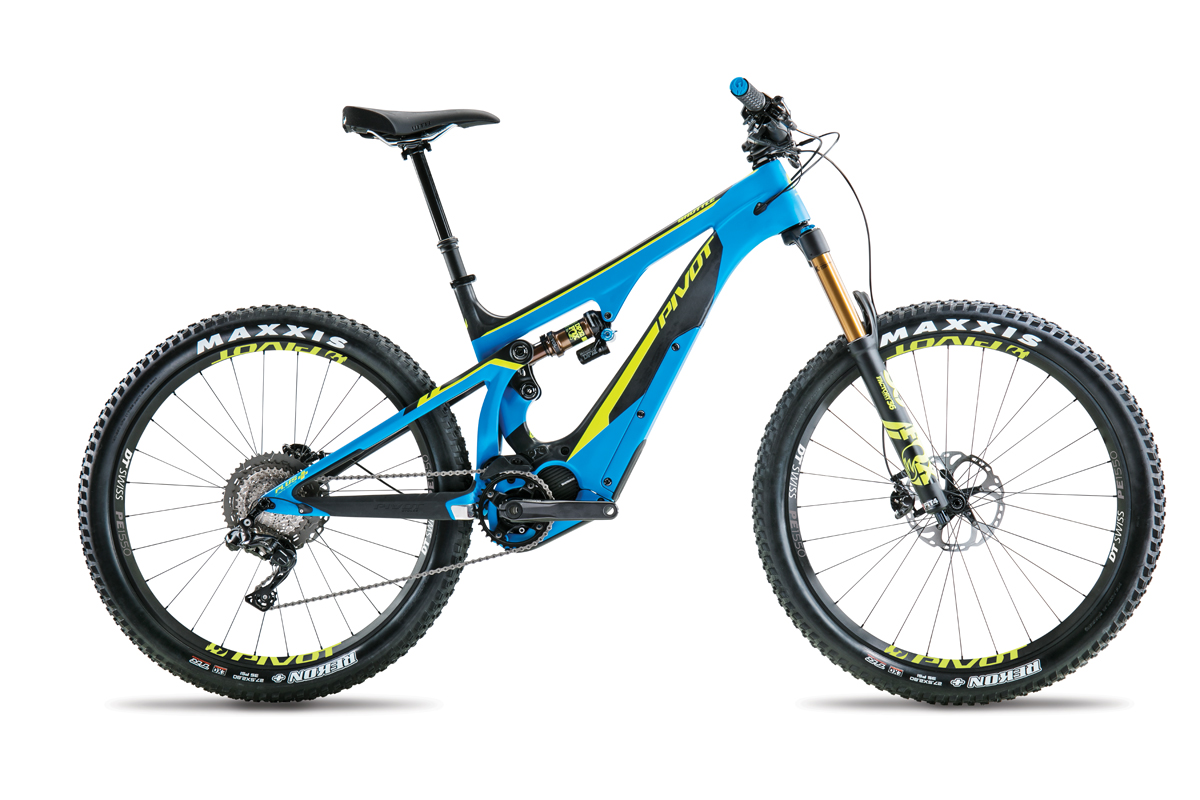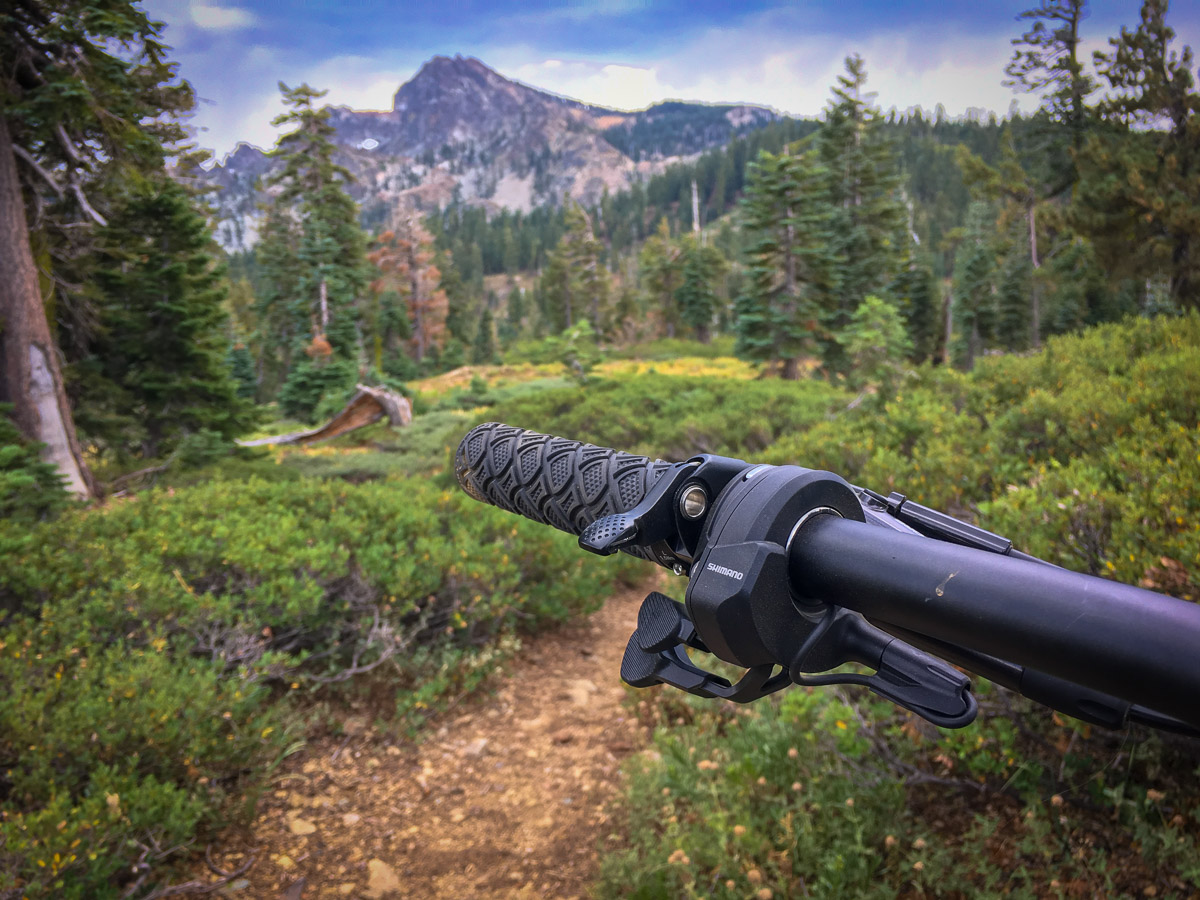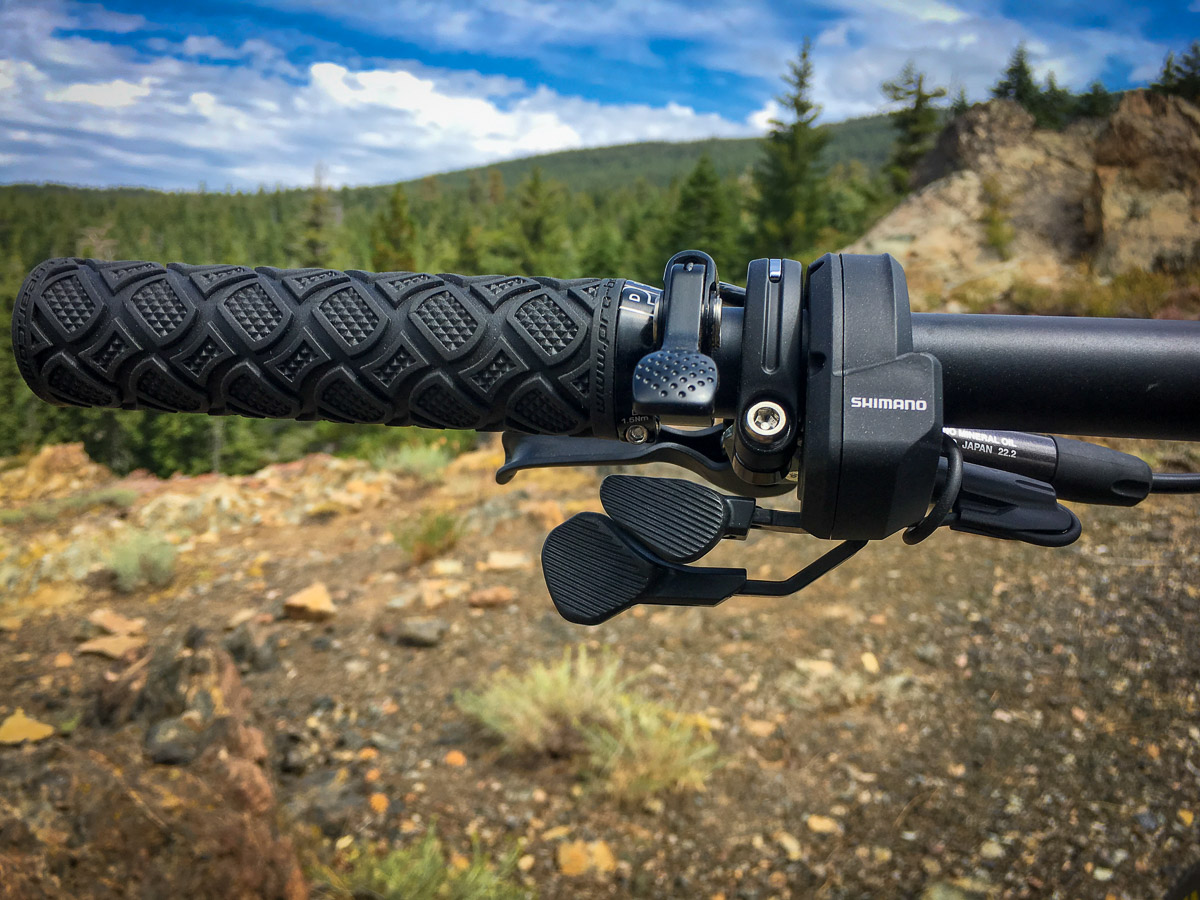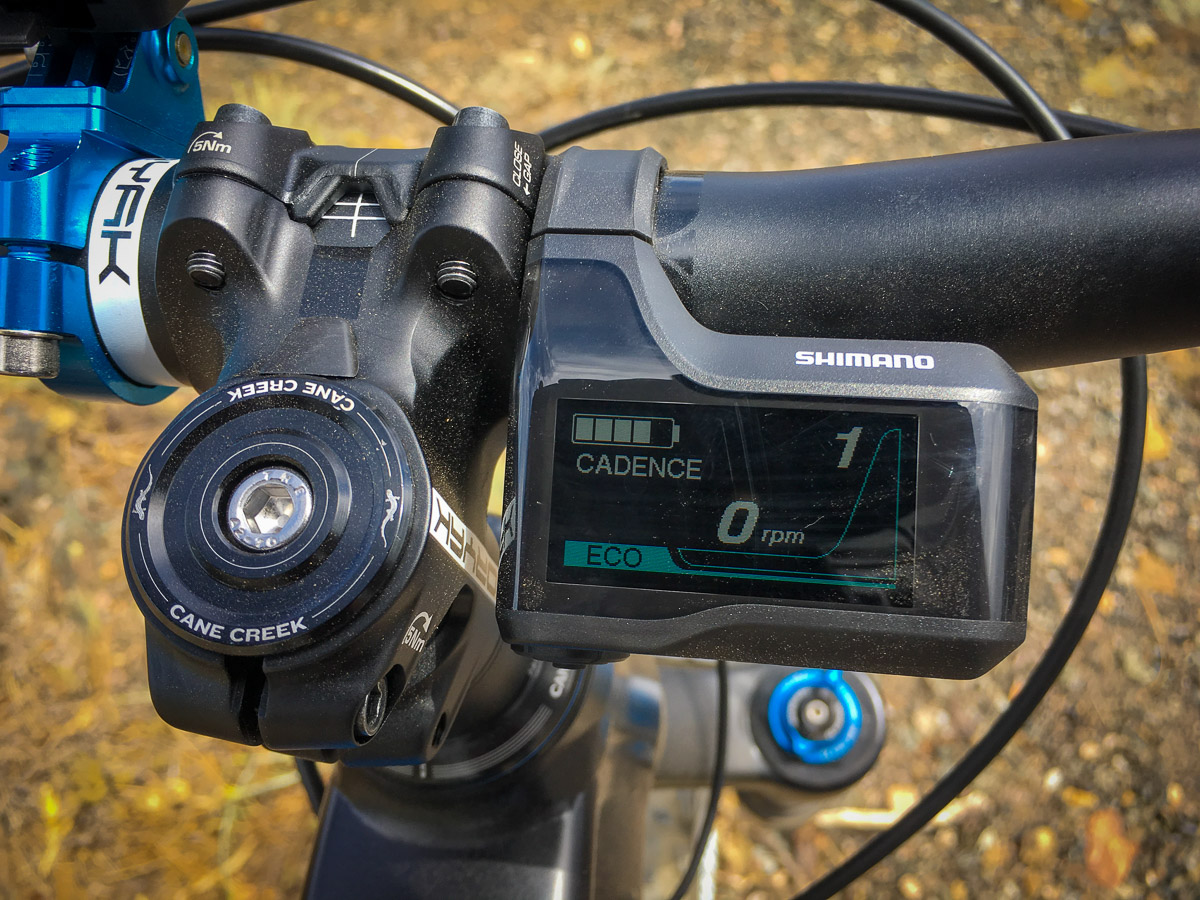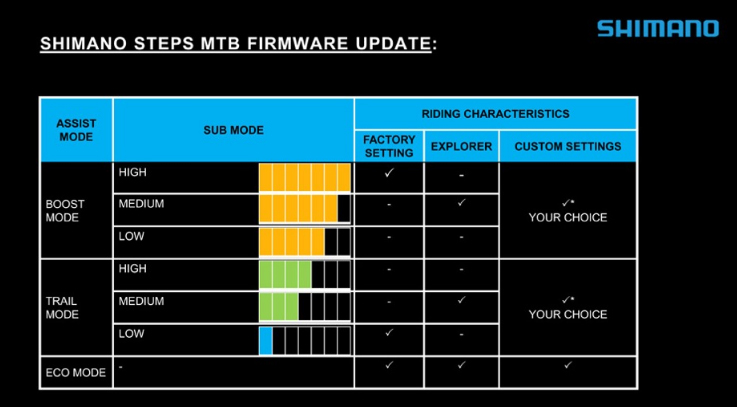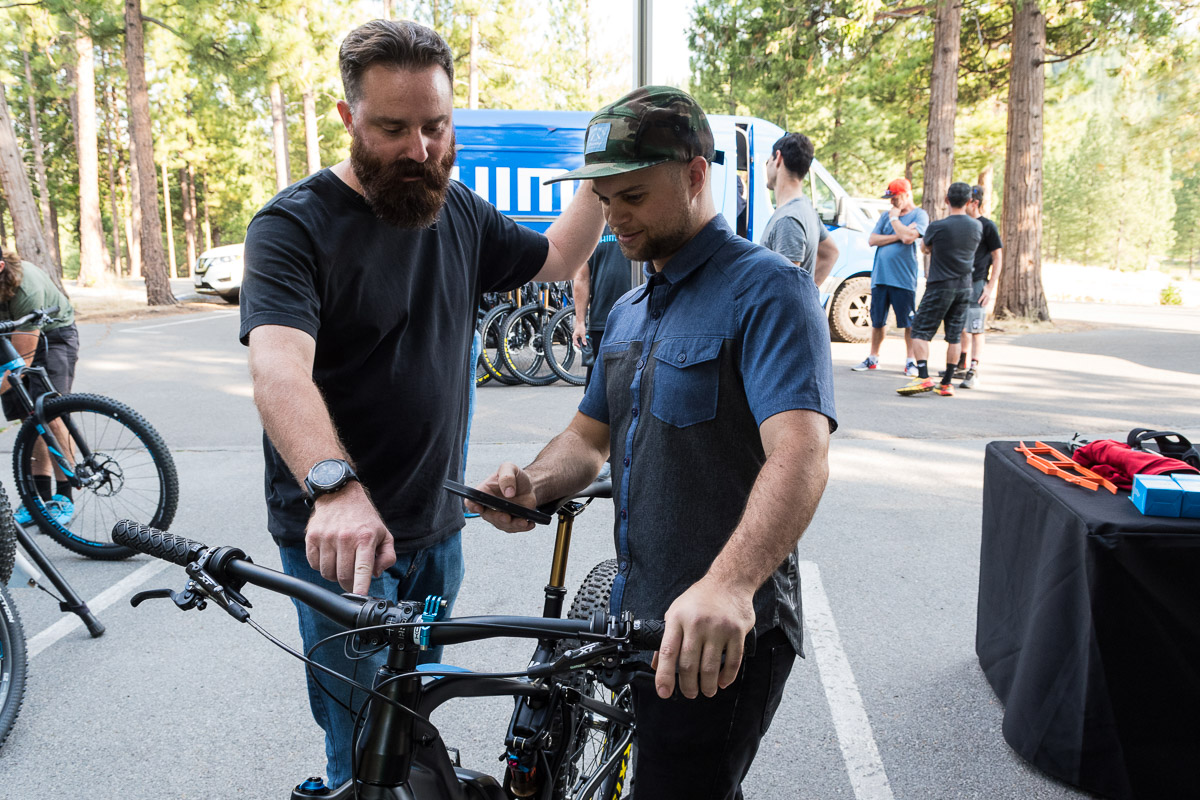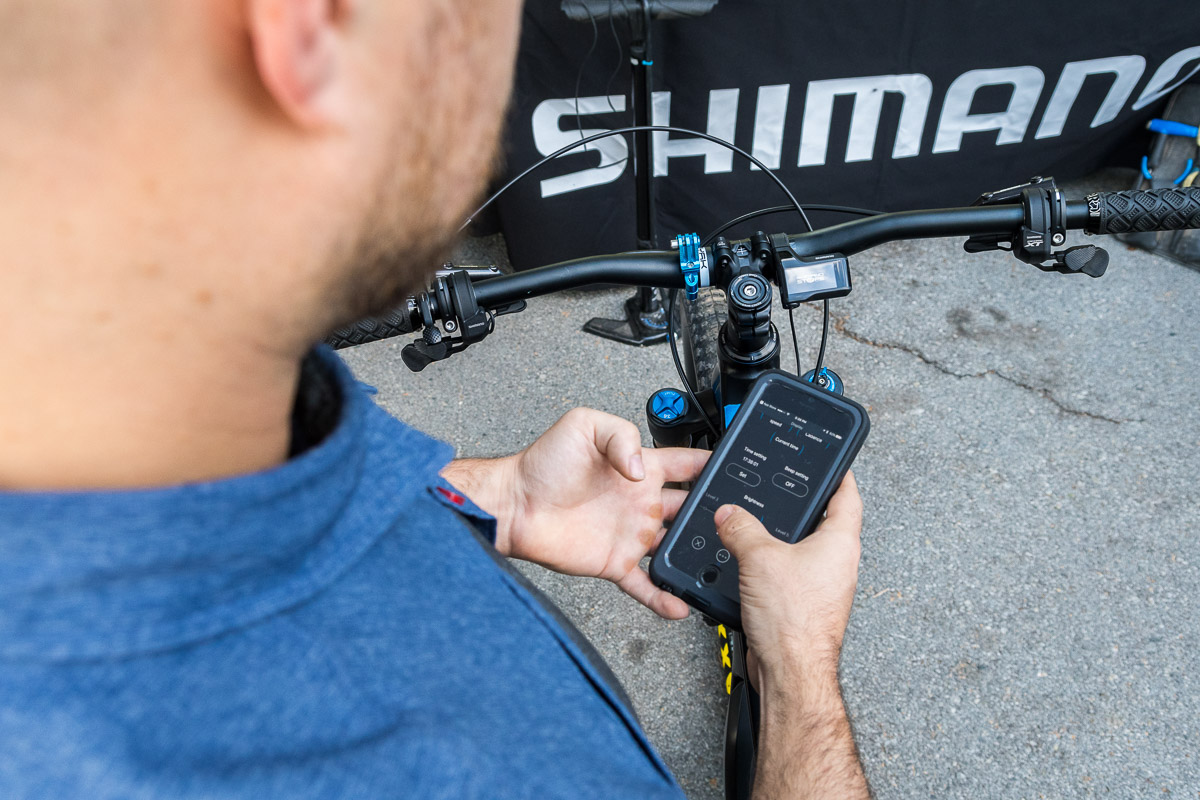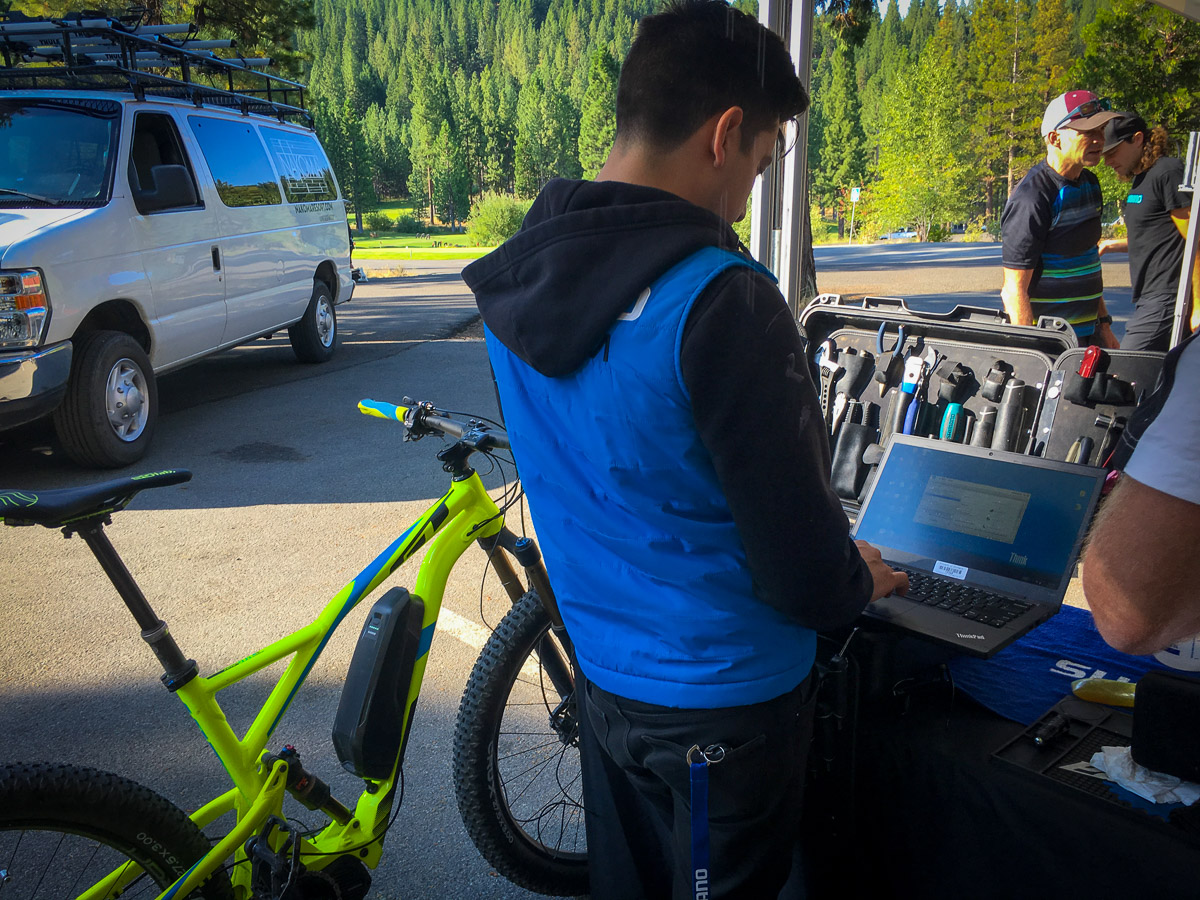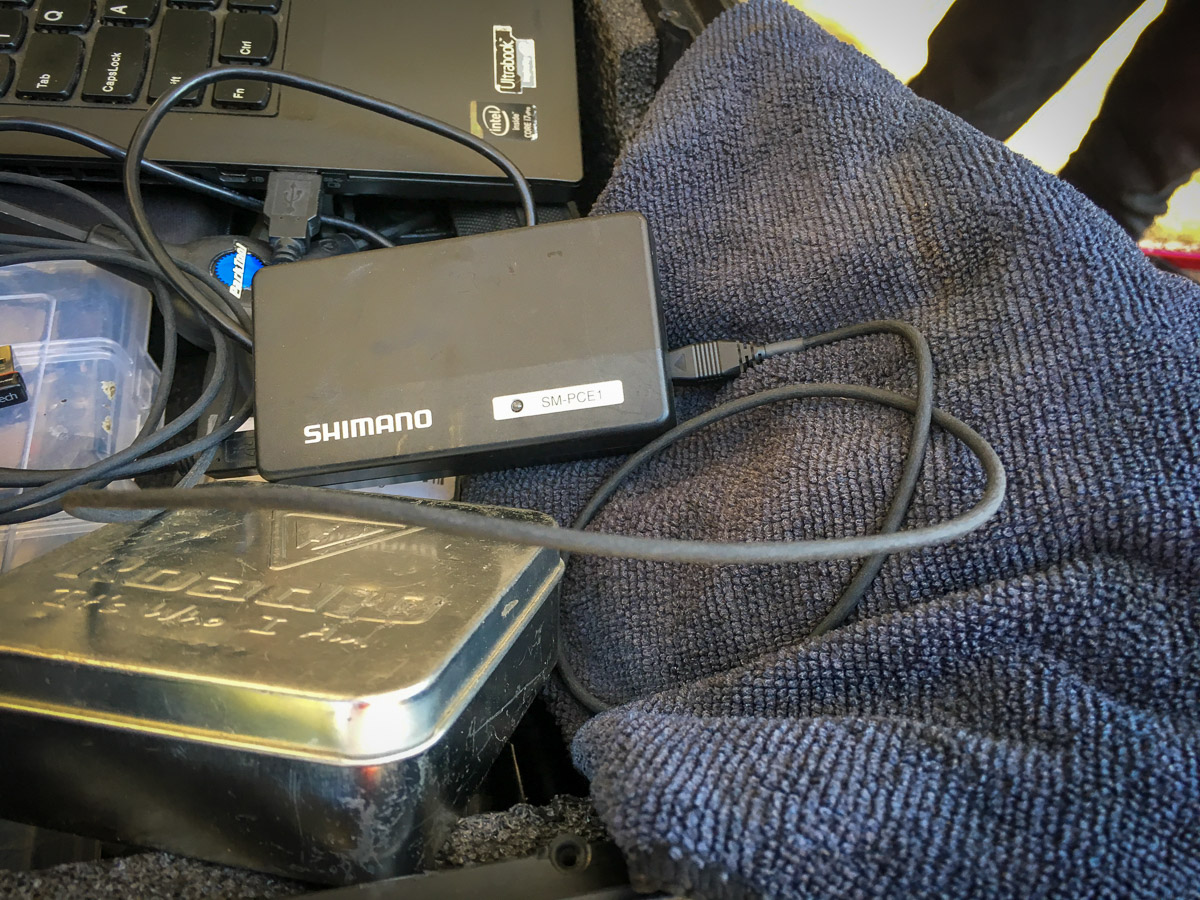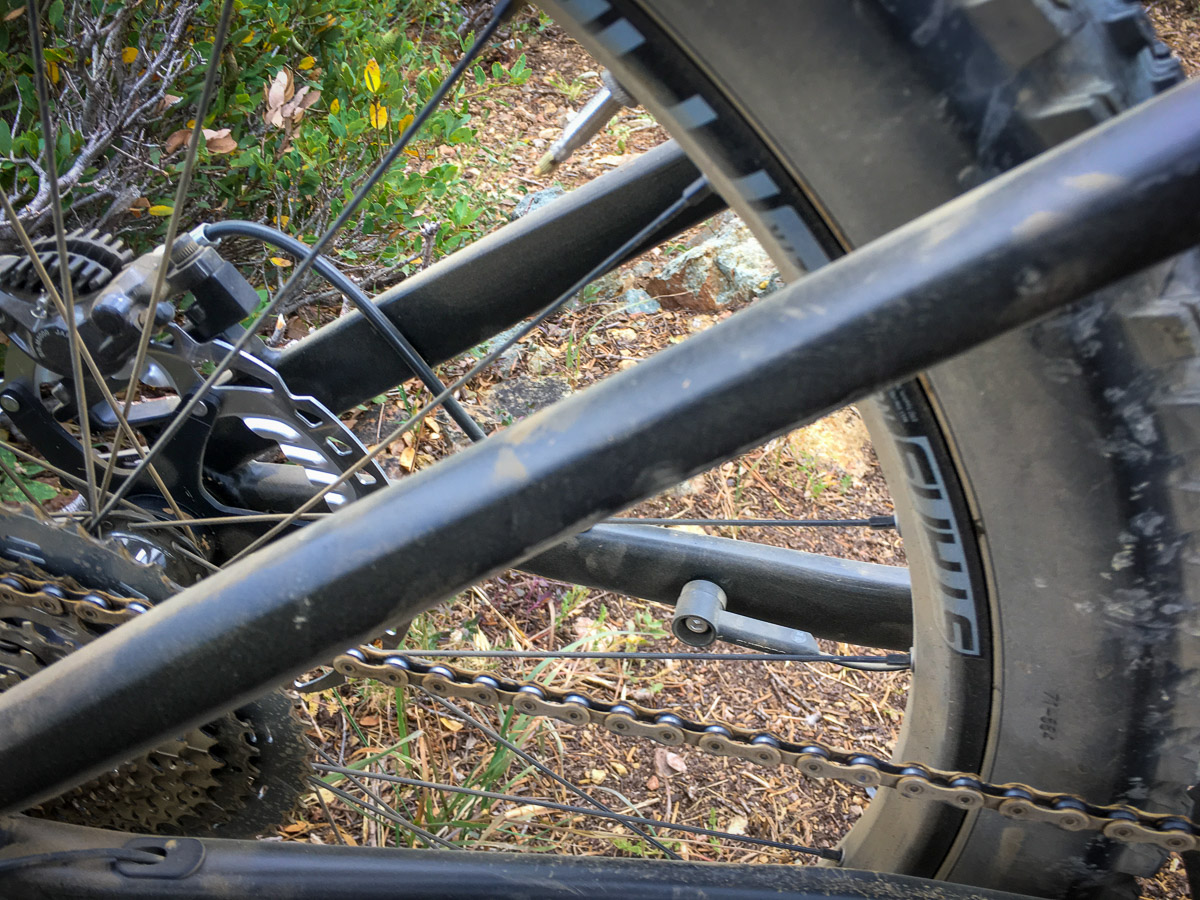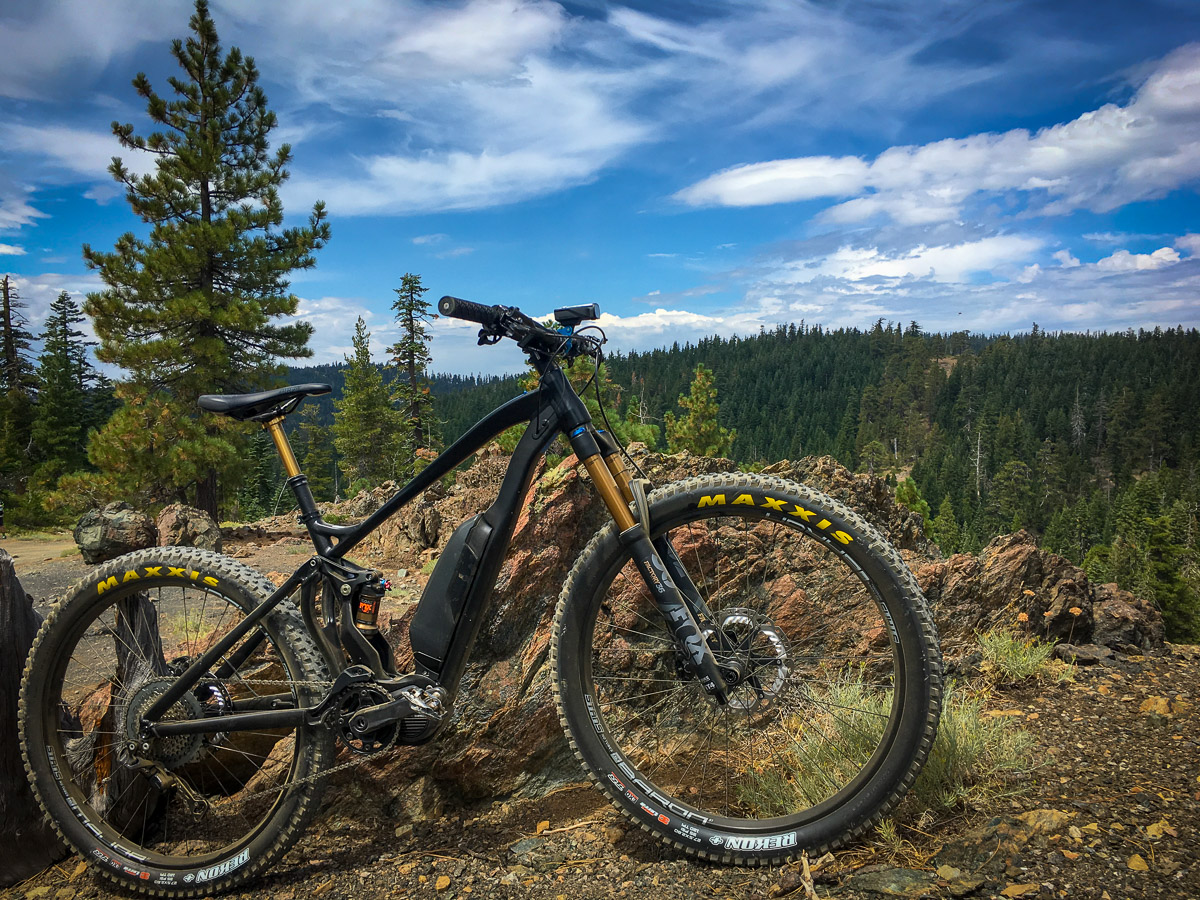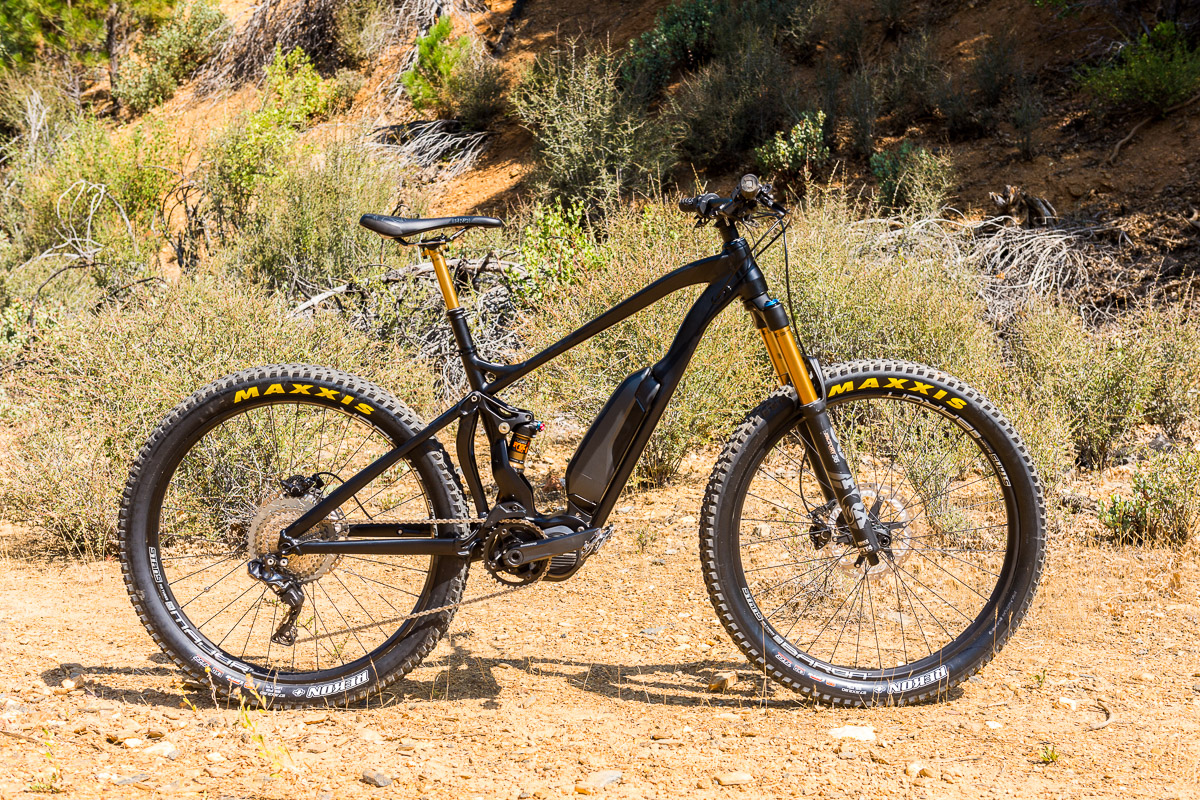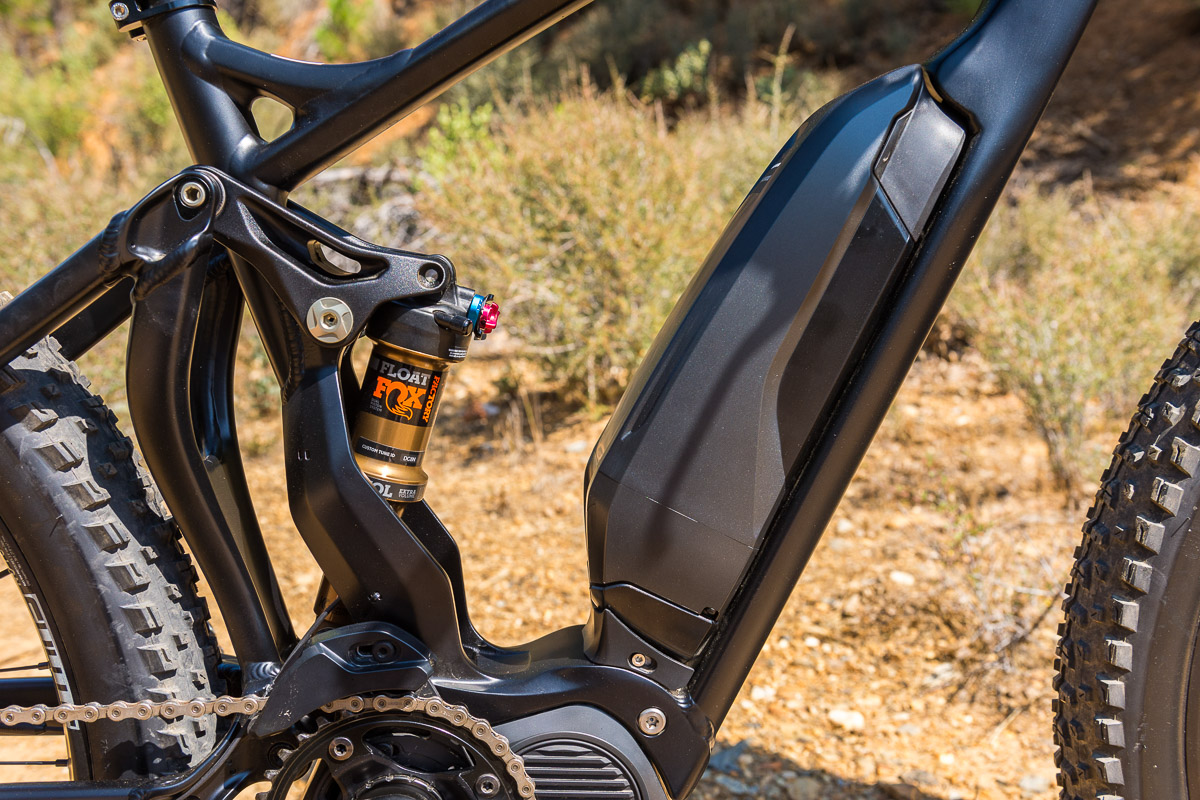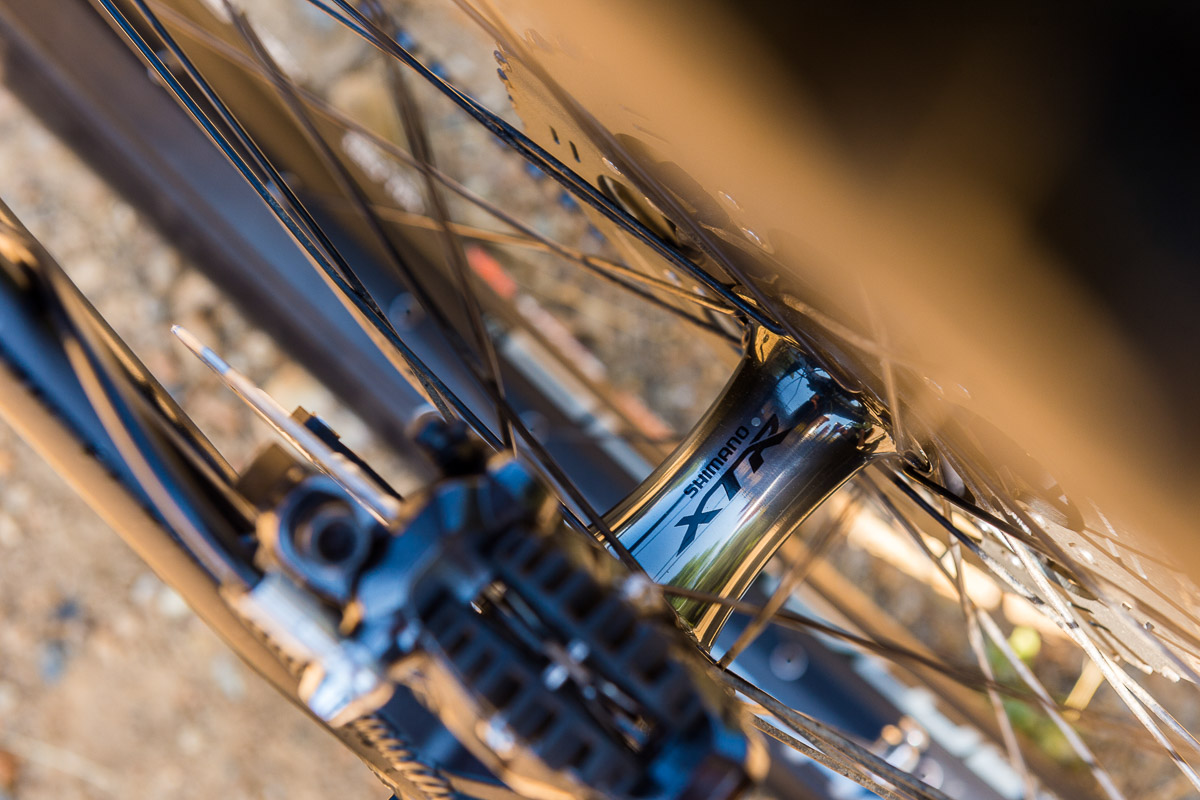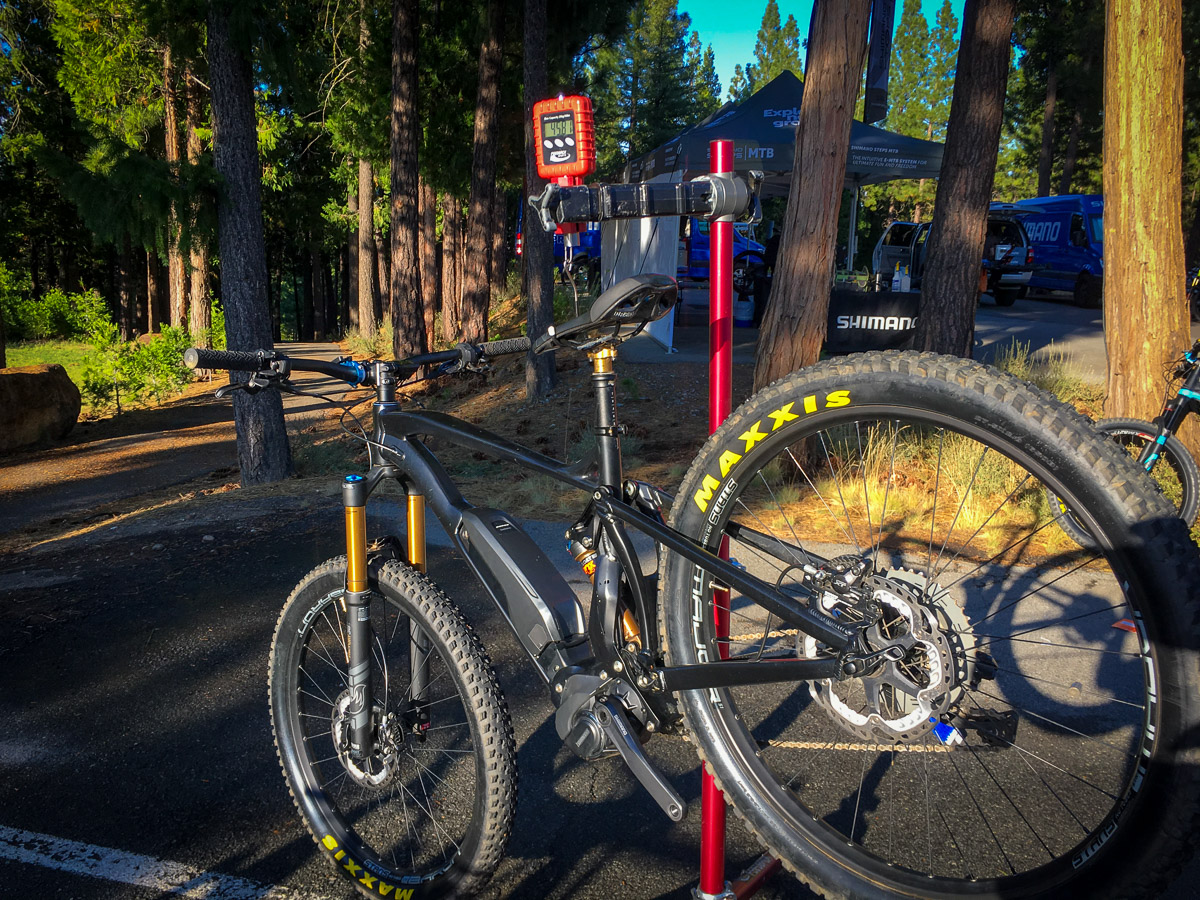There was no question that of all the Eurobikes I’ve attended, this one was the most electric. And we’re not talking about the atmosphere. Countless conversations with European brand managers, dealers, and even a few consumers revealed the same thing – there are a lot of consumers who seem to want e-bikes. Even brands like Mondraker who have historically only dealt in mid to high end mountain bikes are finding that their most popular model for 2017… has a motor.
Perhaps this was the reason that right before leaving for Eurobike, I had to make a quick trip out to California. Now, we are not in the habit of testing or covering e-bike product launches (especially of the mountain bike variety), but for the second time in my life I was headed to what many would consider a bucket list mountain biking destination – to ride an e-bike.
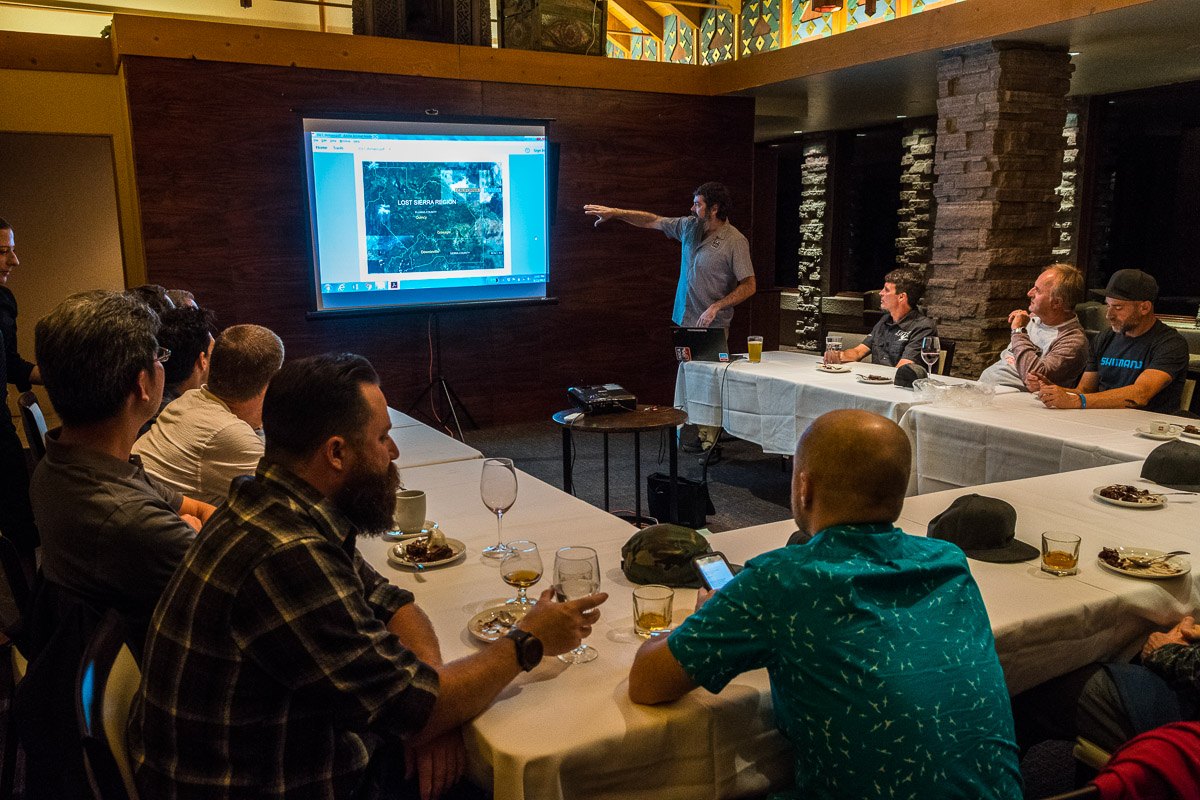
Right off the bat, I feel it’s important to make a few things clear. One of the reasons we were at the Nakoma Lodge near Downieville, CA was that all of the trails we would be riding are motorcycle legal. That’s an important distinction and one that seems to be the cause of a lot of concern in the industry. Personally, I’m completely fine with e-bikes being limited to OHV (Off Highway Vehicle, or motorized) trails. I know there’s this argument about the danger of sharing the trails with a much heavier, much faster dirt bike, but that’s never been much of an issue in my personal experience in places like Moab and now Downieville. I also don’t have a problem with the owners of private trail systems opening up their trails or providing special exemptions to e-bike use. There’s plenty of places that I’ve ridden on private land that the trails have been widened, flattened, and armored enough that you could drive a tank through it and probably not leave a mark. In places like this, e-bikes aren’t going to be an issue. But in areas where trail access is already an issue and will continue to be, I don’t find it necessary to allow e-bikes on all trails.
Fortunately, there are places where groups like the Sierra Buttes Trail Stewardship organization are building multi-use trails for all – including e-bikes. I know that this is simply not possible in every location around the U.S., but the fact that the SBTS is finding a harmonious balance between mountain bikers, e-bikers, trail runners, motos, and horses, brings hope that true multi-use recreational trails can be built so that no one is excluded.
Long story short, off-road e-bike usage is still a mess of passionate opinions and murky legality, but there are already a number of trail systems where they are legal, and will continue to be legal as long as motorcyclists and e-bikers continue to get along. And it was on moto-legal trails in the Lost Sierras that we got our first real taste of the Shimano STEPS E8000 system here in the U.S.
The System
First launched back in 2016, the STEPS E8000 series is essentially Shimano’s XT level mountain bike specific e-bike system. Like most things e-bike, Europe got it first, followed by North America. More than two years after the initial launch, our trip out to California was timed so that it would coincide with the official North American launch of STEPS E8000. Not surprisingly, Shimano stated that the delay in bringing E8000 stateside was uncertainty in how an e-MTB system would be received here. Obviously, e-MTBs are still a contentious issue, but the overall attitudes are definitely changing. Slowly.
What may help change those attitudes is how Shimano views the concept all together. Stressing that it is a bicycle first, not an e-bike first, they say they want to grow the bike market and look at the e-bike as a tool to do so. When it came to designing a mountain bike drive system, it had to ride and handle like a mountain bike. It needed to be intuitive, and of course, had to integrate with Di2.
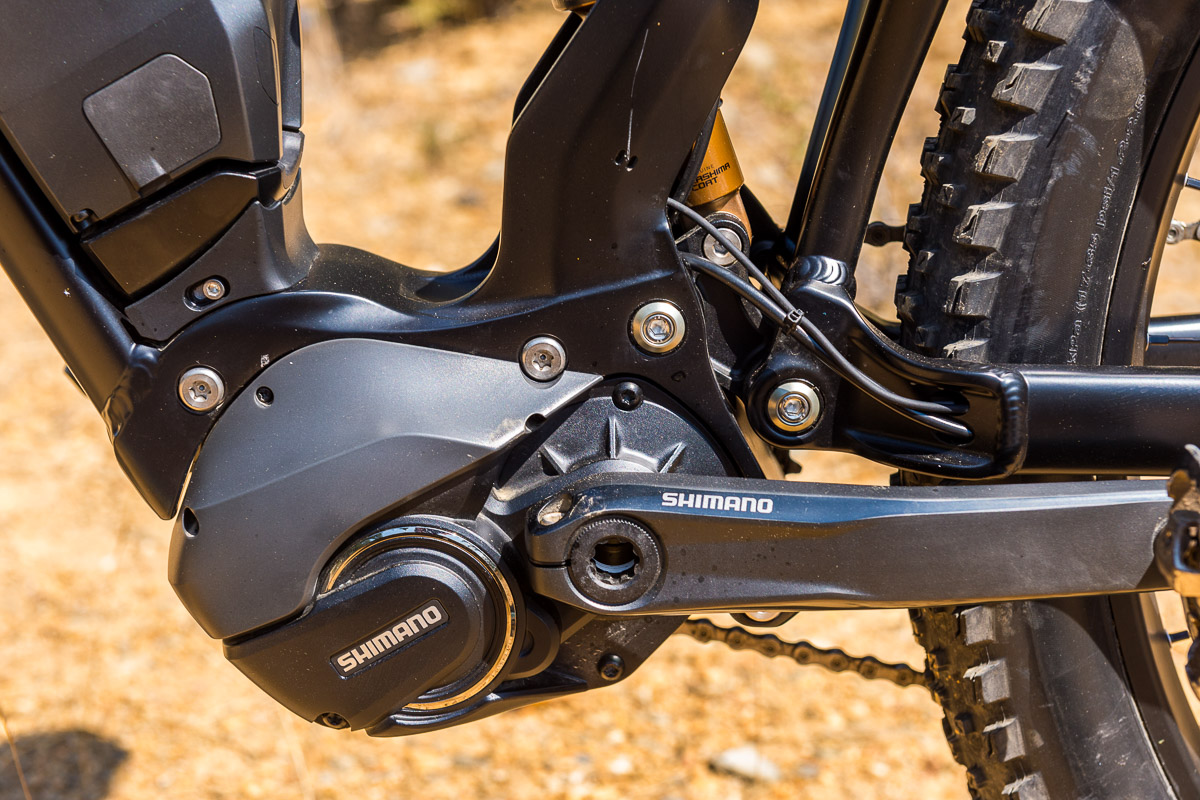
Starting with the drive unit, STEPS has a key advantage over the competition in its size. Since the motor itself is smaller and has the output shaft (bottom bracket) offset to the rear with the mounting bolts moved up and forward, it allows for the same length chainstays as a normal mountain bike. This is crucial to allowing frame designers to use the geometry they want, rather than constraining them to fit an awkward motor in front of the rear tire – especially when considering full suspension.
The drive unit also provides the same Q-Factor as a normal Shimano XT crank. Like we’ve discovered with fat bikes, Q-Factor can be critical in designing a bike that won’t destroy your knees on long rides. And considering the target e-bike market may have bad knees to begin with, this is no small detail.
Compared to the E6000 motor for the urban market, the E8000 motor has a number of important changes. The bolt pattern is altered to allow for better geometry as mentioned, but it also allows for more stability in the frame. Offering 70Nm maximum torque at 250w, the complete drive unit weighs in at 7lbs.
Perhaps equally as important as the geometry considerations, the E8000 drive unit uses a real MTB crankset with a full size chainring. Using essentially the same arms as a normal XT crankset, options like the new Deore XT FC-M8050 Hollowtech e-bike cranks use the bolt-on spline attachment for both sides since the chainring is attached to the freewheel on the drive unit. Cranks are available in solid or hollow forged in the case of XT, and now in 165, 170, and 175mm options. As far as the chainrings are concerned, of course it’s a proprietary fit with either 34 or 38t DCE (Dynamic Chain Engagement – plus/minus tooth profile) options available. Equipped with a built in chain guide, the guide is adjustable and you can remove the chainring without removing the guide.
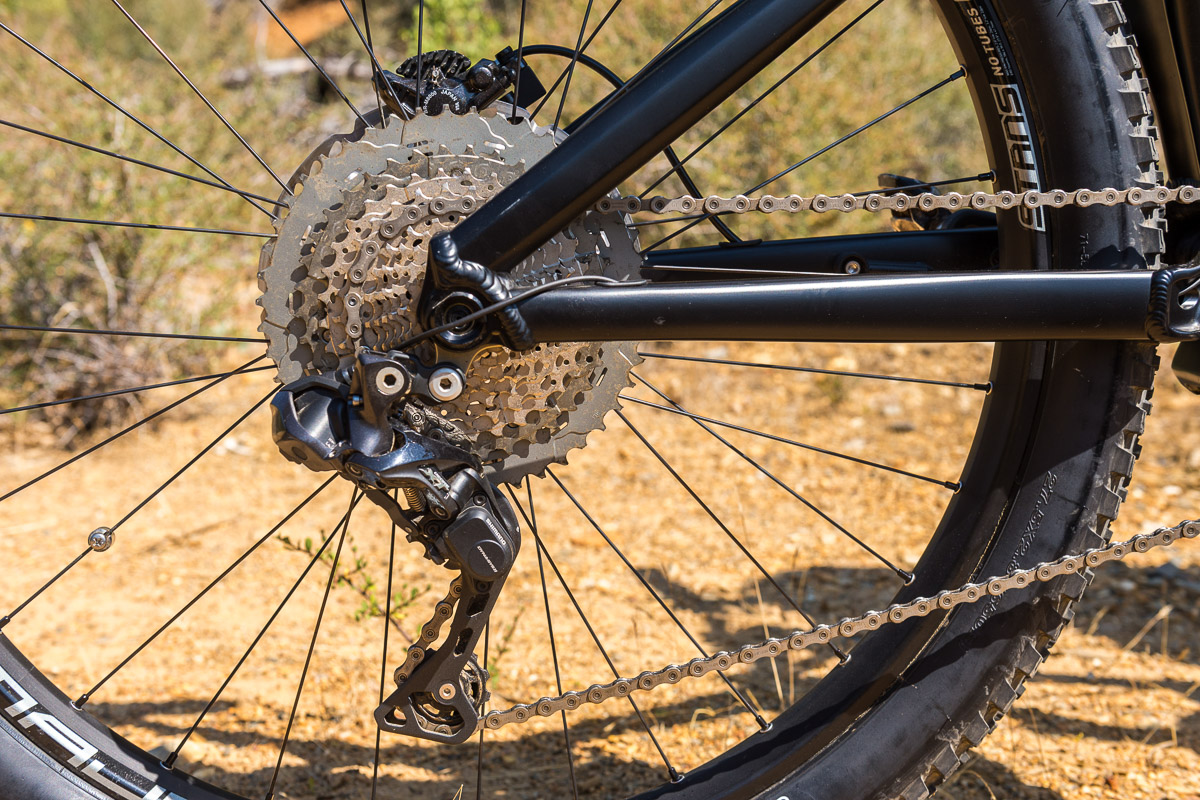
Interestingly, Shimano does not have e-bike specific chains, cassettes, or derailleurs – but they do have e-bike capable chains. Their claim is that e-bike specific parts are designed to reduce breakage. Wanting their normal chain to be as strong as an e-bike chain, Small changes were made from the HG900 to the HG901 series to make the 901 the strongest chain they make. The chains have a revised plate profile that is designed to prevent breakage while double shifting under load. This includes the new Shimano Quick Link which is also e-bike rated.
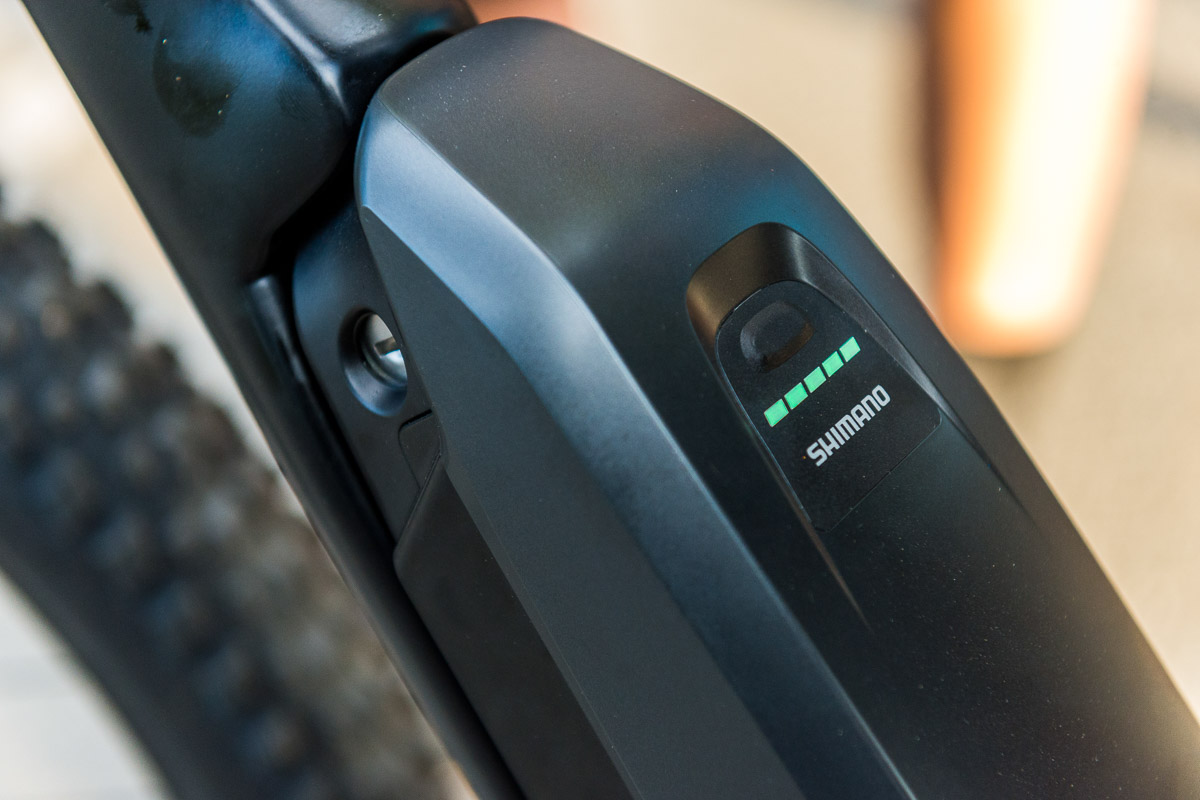
No e-bike system is complete without the battery, and this is another area that Shimano employed their signature over-engineering. Using a 504Wh battery, Shimano is quick to point out that watt-hours do not tell the full story of e-bike range. Liking it to fuel efficiency, Shimano’s MTB Product Manager Nick Murdick said it would be like talking about the size of a gas tank in a car without talking about miles-per-gallon.
Offered in both internal and external configurations, the external battery is actually a bit lighter even though they have the same number and size of cells. Murdick claims that this is due to the design of the case which is said to be the highest quality available. Stating that their battery factory “had never seen QC standards so high for a battery case,” the development of the battery was a costly part of the equation because it had to be strong enough to endure repeated crashes, while the battery itself had to maintain its capacity over 1000 charges – at which point Shimano says the battery will still have 60% of its original capacity (they claim most batteries are to 60% by only 500 charges). This is something that isn’t often discussed about e-bikes – the batteries have a finite life span and will have to be replaced at some point. Whether that means replacing or rebuilding the battery or just scrapping the bike remains to be seen, but it’s something to consider. And even more reason to buy a higher quality e-bike with a battery that should last longer.
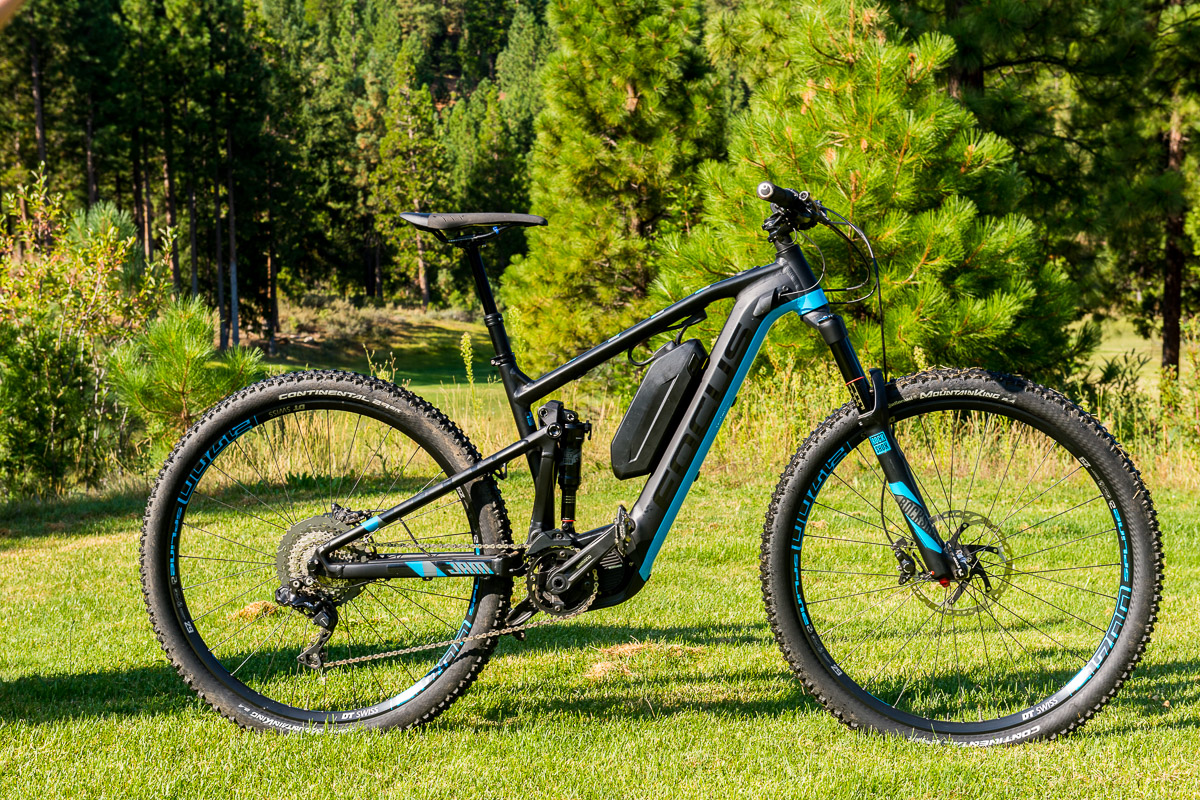
Manufacturers are also free to create their own batteries, like Focus did with their Jam². The frame features an internal battery which is smaller and makes the down tube look more natural, but a second TEC battery pack can be added on top for additional range for longer rides.
Or int he case of Pivot’s new e-bike, the external battery pack was actually built into the carbon frame.
Maybe the most unique feature of the E8000 series is the integration of essentially a Firebolt Di2 shifter for the mode select rather than a traditional button. Using it just like a shifter, one lever increases the assist level from off, to Eco, to Trail, and then Boost mode, while the other level decreases the assist level. Combined with the Shimano STEPS MTB color LCD display, you can quickly tell what mode and gear you’re in as well as indicated battery range which is updated in real time. The SW-E8000-L shifter does mean we’re back to the days of awkward dropper lever placement, but Murdick mentioned that you could use the left control unit from the E6000 series for better dropper lever placement if it bothers you.
Along with the three stock levels of assist, a Walk Mode is included to help you get the 45+lb bike up steep grades. To enter Walk Mode, simply hold down the bottom lever for two seconds, then after the walk mode shows up on the screen, release and then press and hold again to propel the bike forward. Letting go of the lever will stop the assist, as will any input from the sensors on the bike.
In addition to the original settings, Shimano recently introduced updated firmware for the system which allows individual tuning to the different modes. Divided into Dynamic (factory), Explorer, and custom, you can fine tune the level of assist provided in different modes to either conserve battery life or just match your riding style. In Dynamic mode the Trail setting is the lowest possible while Boost is the highest, and in Explorer mode the Trail setting increases but the Boost mode decreases. In the custom setting, both Trail and Boost modes can be adjusted to your personal liking. The custom adjustments are available through the PC interface or through the Android or iOS app which connects to the system via Bluetooth (or ANT+). The app also allows you to adjust things like which shift lever does what, change brightness, system settings, etc. Like many things electronic, the system can be constantly updated through firmware downloads to allow for things like battery indication on your Garmin, additional shift settings, and more.
The final piece of the puzzle is the sensor system which currently includes a rear wheel speed sensor that attaches to the chainstay. Shimano has a sensor where the magnet gets attached to the brake rotor, which would eliminate the need for a spoke magnet. Pedalec e-bikes have a complicated series of sensors that ensure power is only applied when you’re pedaling, but the end result isn’t always the same. Ideally, the power comes on smooth so it feels like you’re just having a great day on the bike and this is one of the areas that Shimano excels – but more on that in the next post.
The Bike
Showing up to a fleet of blacked out test mules, our ride for the two days would be essentially a catalog framed e-bike. Meant to highlight the drive system rather than any one particular company, these bikes from Astro Engineering actually turned out to be quite good. Following trends in the e-bike industry, the bikes featured 27+ wheels and tires with 150mm of front travel and 140mm at the rear.

Plus bikes seem like popular candidates for a motor, and it’s easy to see why. Better traction means the tire isn’t as apt to cut loose when on the power, and the increased weight of the e-bike means you can run higher pressures giving the plus tires more support.
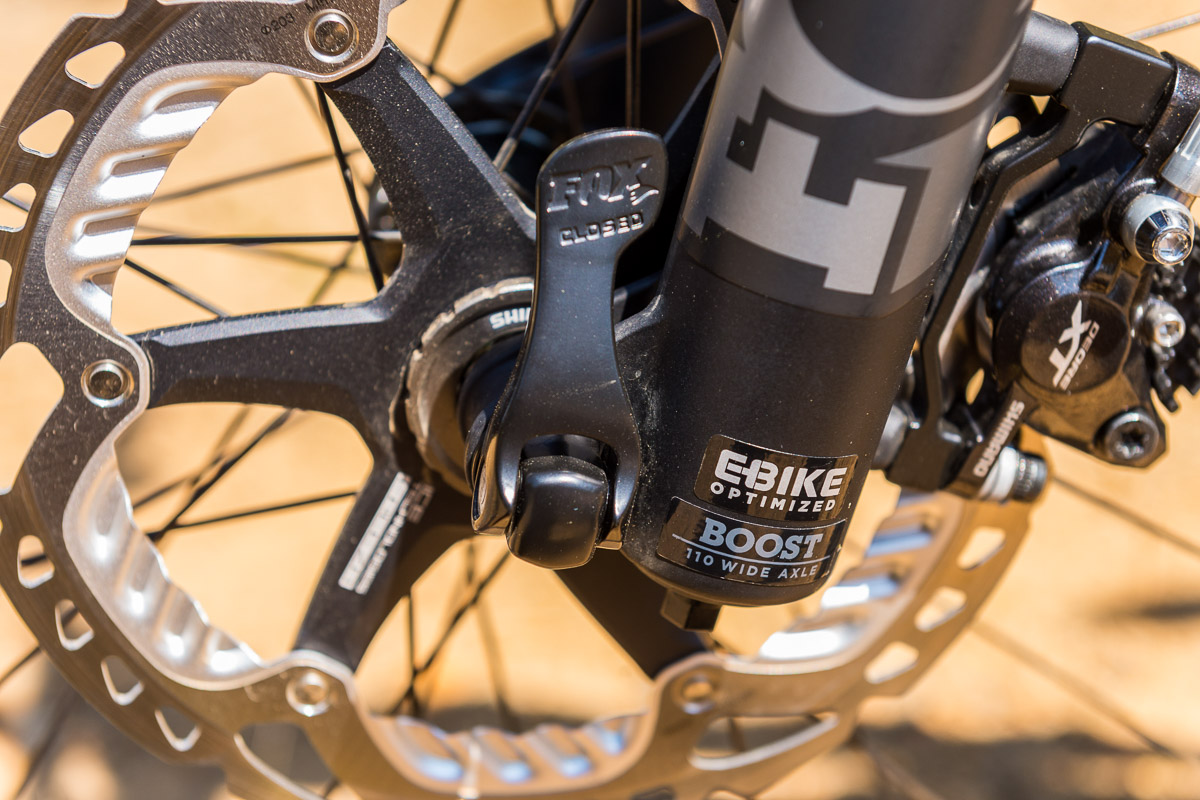
With e-mountain bikes especially, you’ll see things like “E-bike Optimized” parts including forks, brakes, and more. Essentially, parts like the fork steerers are beefed up to withstand repeated stopping and bashing from heavier bikes and higher speeds. Naturally, the brakes are also bigger with 203 or 180mm rotors front and rear to slow things down. For even more stopping power, Shimano introduced a four piston XT brake caliper that will be great for heavier e-bikes, but also for aggressive riding on human powered bikes.
In spite of being a catalog aluminum frame with all aluminum parts, this bike was still surprisingly light (for an e-bike) at 45.77lbs for a medium with a dropper post, camera mount, and no pedals.
How did the system ride? Check out our next post for more.
